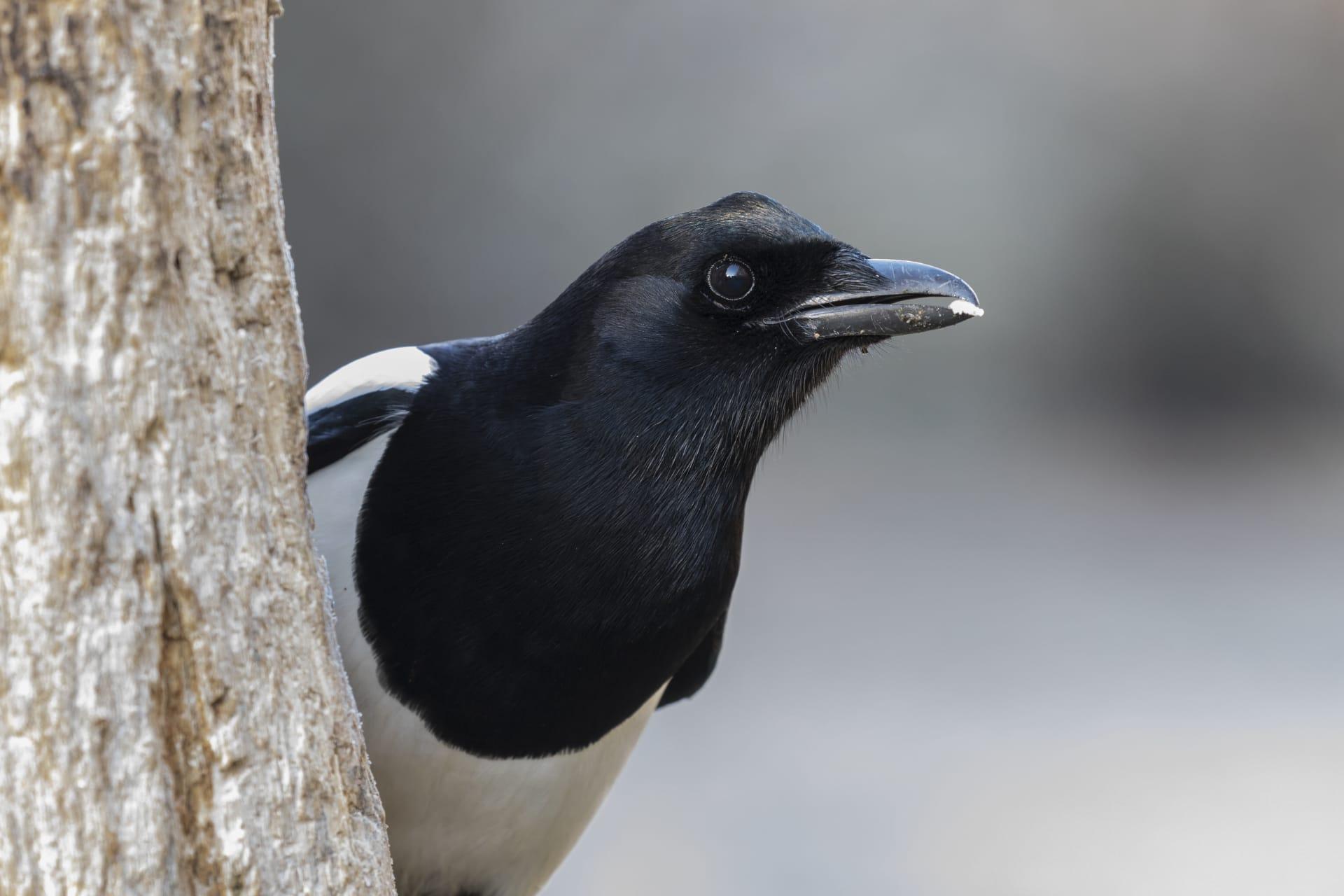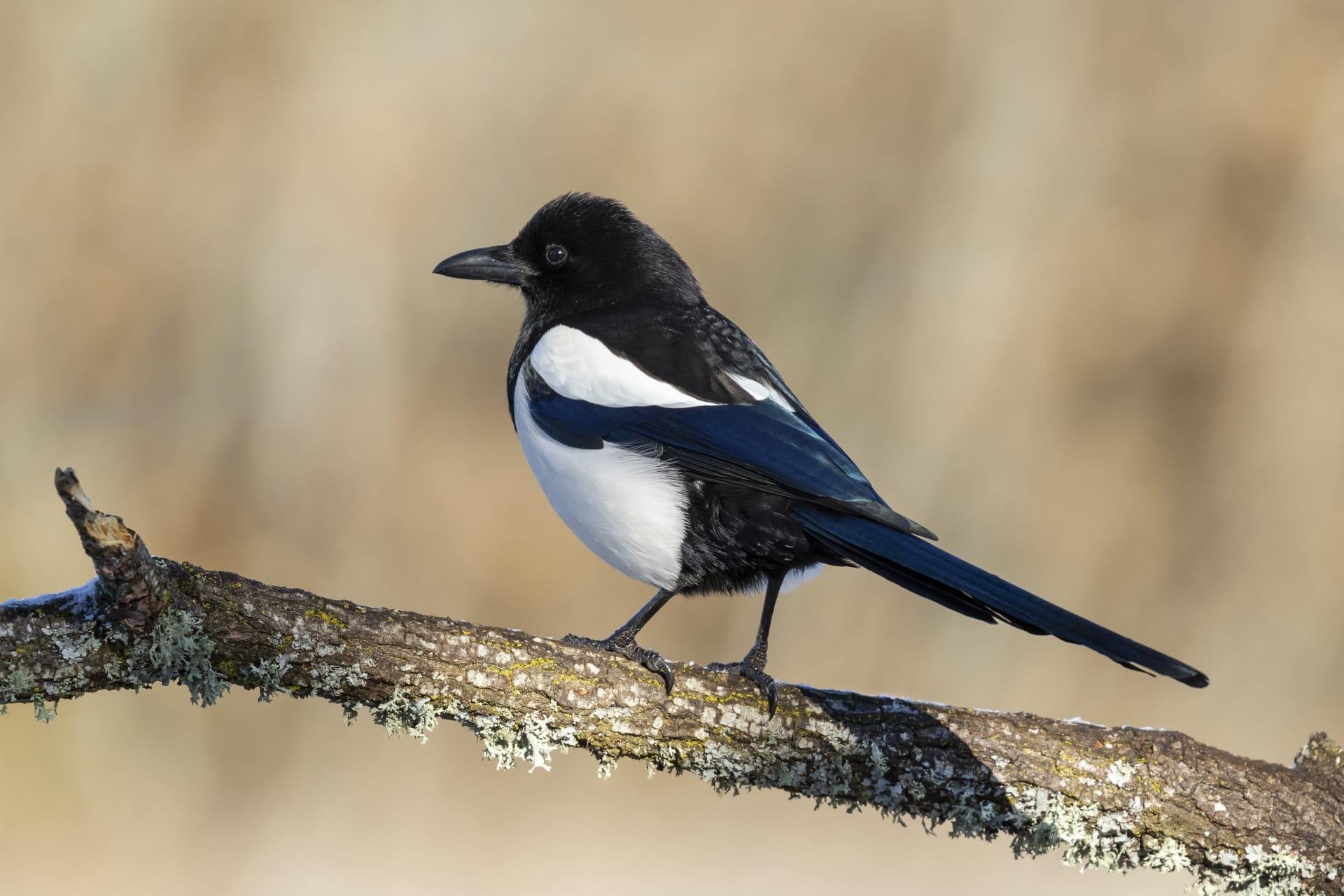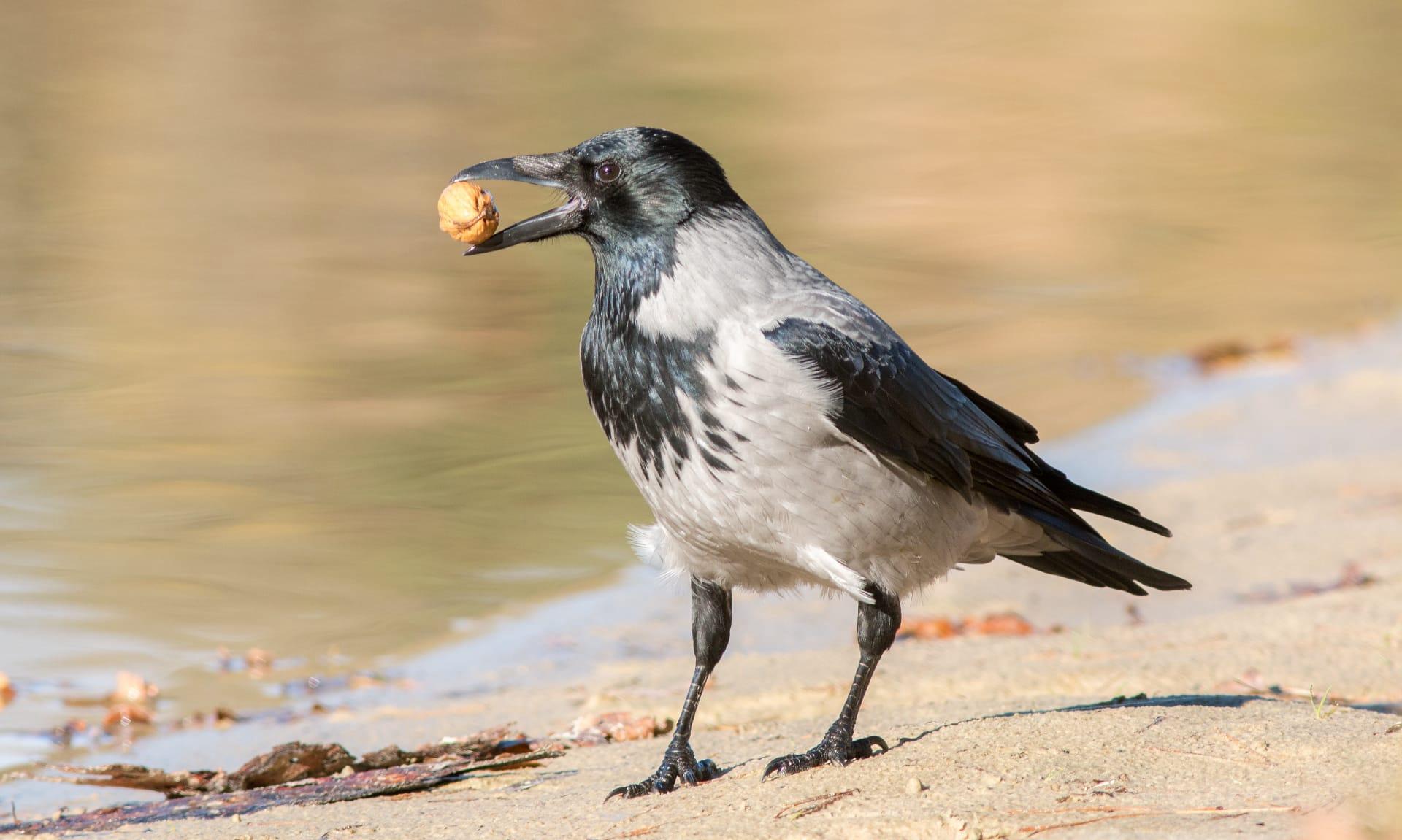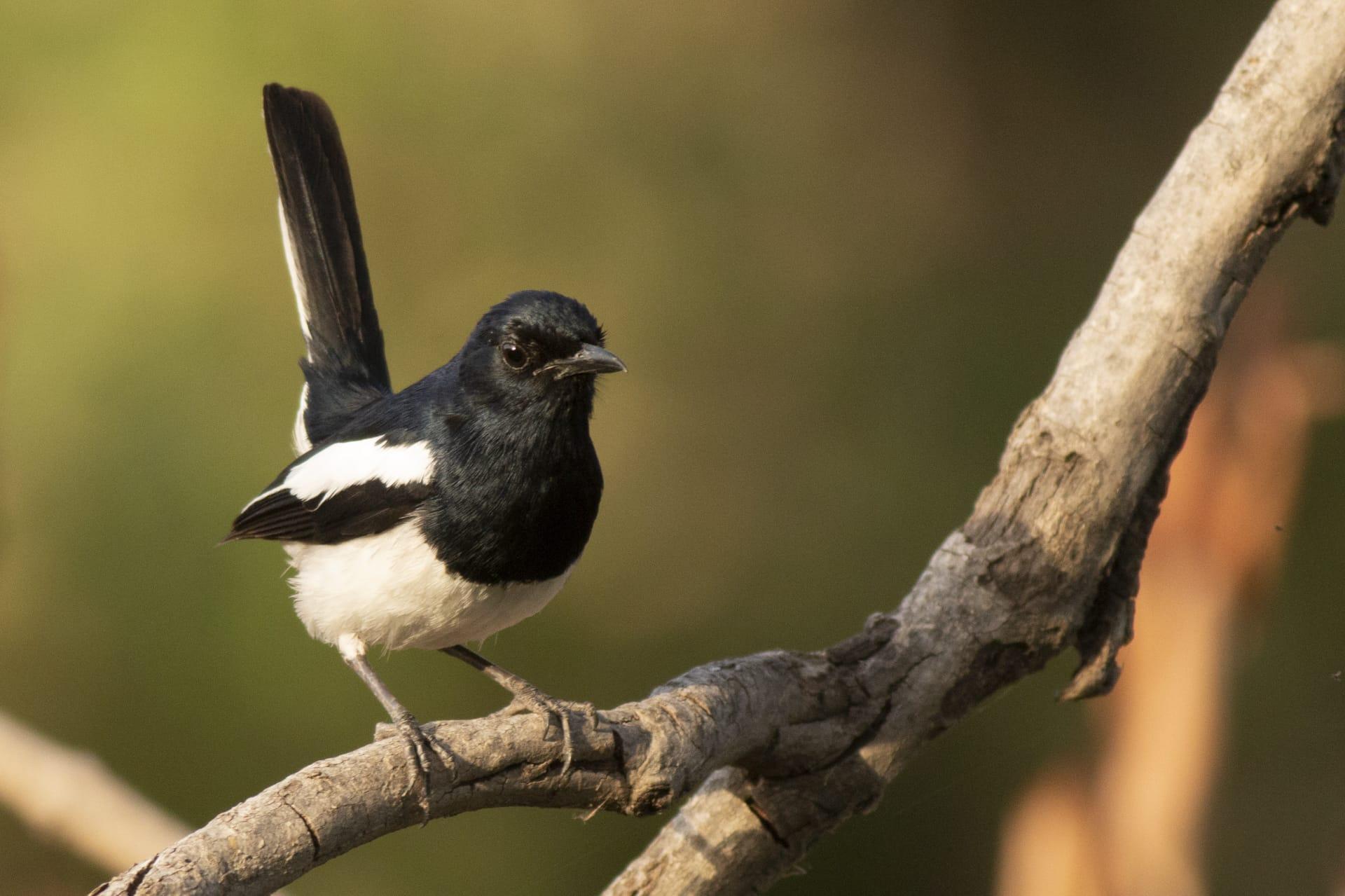1
Majestic in appearance, magpies are known for their striking black and white plumage and long tails. A key feature is their iridescent feathers that shimmer in sunlight, exhibiting hues of green, blue, and purple. This brilliance is not due to pigmentation but to the structure of the feathers, which scatters light. Measuring up to 18 inches in length, with their tail accounting for over half of this, magpies are among the larger birds in the passerine (perching bird) category.
Magpies are not just visually stunning; they are also recognized for their intelligence. Ranking among the most intelligent of birds, they are one of the few non-mammal species able to recognize themselves in a mirror – a test of self-awareness. In experiments, magpies have shown this ability by removing markers from their bodies while looking in a mirror, a behavior not observed in many other bird species.

2
Communication is a vital part of magpie society. These birds employ a complex vocal system that includes a variety of calls, songs, and even mimicry of other species' sounds. They use specific calls for different situations, such as warning calls for predators or calls to attract mates. Studies have revealed that magpies can even alter their calls in the presence of human noise pollution, suggesting adaptability in their communication methods.
Magpies are also known for their resourcefulness in nesting. They build large, dome-shaped nests made of twigs, often reinforced with mud. These nests are not just a resting place; they are fortified strongholds against predators. Magpies often construct two entrances and line the interior with soft materials like grass and feathers for insulation and comfort, showcasing their architectural ingenuity.

3
Magpies exhibit a unique behavior known as 'anting.' In this process, they allow ants to crawl on their bodies and secrete formic acid, which is believed to help with parasites. Some magpies have been observed to crush ants before applying them, utilizing the ants' chemicals directly. This peculiar behavior highlights the magpie's use of natural resources for self-care and hygiene.
Diet-wise, magpies are omnivores and display a versatile palate. Their diet includes fruits, seeds, insects, small mammals, and carrion. In urban environments, they're known to scavenge food waste, showcasing their adaptability. This varied diet not only helps them thrive in different habitats but also impacts the ecosystem by controlling insect and rodent populations.

4
Magpies have a special role in various cultural mythologies. In Chinese culture, they are seen as symbols of good luck and happiness. The magpie's image is often used in art and literature, representing joy and celebration. In Native American folklore, they are considered clever and resourceful tricksters, often featured in stories highlighting these traits.
Seasonally, magpies are known for their 'courtship' rituals. During mating season, males perform elaborate displays to attract females. These displays include loud calls, wing flapping, and tail fanning. Once a pair forms a bond, they often stay together for life, showcasing a level of loyalty and partnership unique among many bird species.

5
Magpies are also notable for their playfulness. They have been observed engaging in activities like sliding down roof slopes or playing with objects, indicative of their curious and intelligent nature. This play is not just for fun; it's thought to help young magpies develop motor skills and learn about their environment.
Magpies are known to collect shiny objects, although this behavior is often exaggerated in popular culture. They are attracted to items like foil, coins, and small shiny trinkets, which they sometimes take to their nests. This trait has fueled many folk tales about magpies, although research suggests their attraction to shiny things is more about curiosity and exploration than hoarding.